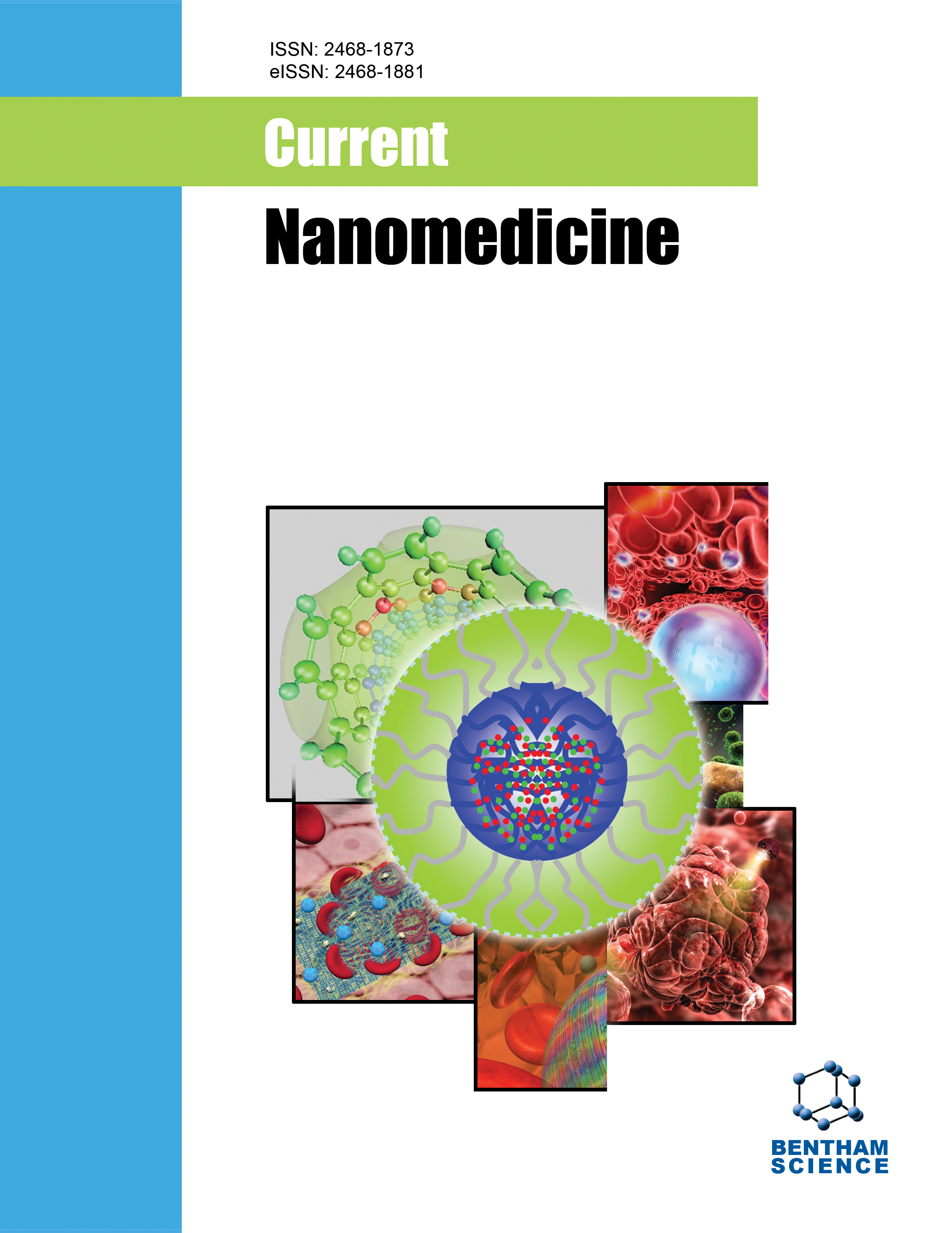- Home
- A-Z Publications
- Current Nanomedicine
- Issue Home
Current Nanomedicine - Current Issue
Volume 15, Issue 2, 2025
-
-
Nanocarrier-based Drug Delivery of Brinzolamide for Ocular Diseases: A Mini-review
More LessAuthors: Rashmi Maurya, Akash Vikal, Preeti Patel, Raj Kumar Narang and Balak Das KurmiBrinzolamide (BRZ) represents a significant advancement in glaucoma treatment as a topically active carbonic anhydrase inhibitor (CAI). It exhibits selectivity and potent inhibitory activity for carbonic anhydrase type II isozyme (CA-II), which is crucial in aqueous humor secretion. With excellent ocular bioavailability and a formulation optimized for physiologic pH, brinzolamide effectively lowers intraocular pressure by inhibiting C Read More
-
-
-
Revealing the Potential of Mucoadhesive Ocular Nanoparticles for Enhanced Drug Delivery
More LessAn ocular drug delivery system, or ODDS, is the method for executing a prescription to the peeper in order to treat or manage conditions related to the eyes. The range of ODDS modalities is broad and includes simple aseptic eye drops for the optic surface as well as complex implants for intraocular tissue. The use of ODDS is often necessary for states such as cataracts, progressive retinal illness, inflammation, dry eye syn Read More
-
-
-
Advances in Nanoparticulate Therapeutics for Acute Lung Injury: Addressing Unmet Clinical Needs through Targeted Therapy and Controlled Delivery of Drug
More LessBackgroundAcute lung injury (ALI) is a life-threatening condition characterized by severe invasion of inflammatory cells, lung edema, and the development of intestinal fibrosis. The activation of proinflammatory cytokines like TNF-α, IL-6, and others results in the development of several risk factors for ALI. It has been observed that no viable therapies for lung injuries exist. Therefore, there is a significant need for healthcare Read More
-
-
-
Nanoemulgel: An Innovative Carrier for Drug Delivery of Poorly Water-soluble Drugs
More LessAuthors: Prevesh Kumar, Zaira Hussain, Phool Chandra, Diksha, Varsha Raj, Navneet Verma and Alok SinghRecently, the delivery of hydrophobic/ poorly water-soluble drugs has been a difficult task. Various approaches have been developed to counter the former and other main issues, such as solubility, bioavailability, etc. However, only a few formulations have successfully addressed the problems and nanoemulgels are a standout among them. The nanoemulgel drug delivery approach combines multiple benefits associated with e Read More
-
-
-
Nanoencapsulation of Colchicum speciosum for Alleviating Lower Back Pain
More LessAuthors: Siavash Beiranvand and Farshad Hassanzadeh KiabiThis review focuses on the use of Colchicum species that have been capsuled to treat lower back pain. Low levels of physical activity produce atypical spinal loading, which increases the risk of discomfort and damage. Acetylcholine (AChE inhibitors acetylcholinesterase AChE-I) has a crucial role in the development of amyloid- plaques, one of the disease's main pathogenic processes, and in boosting psychological function. To Read More
-
-
-
Lipid-based Drug Delivery Systems: A Promising Approach for Overcoming Bioavailability and Solubility Challenges in Drug Development
More LessAuthors: Akash Gupta, Vishnu Mittal, Anjali Sharma, Aashima Barak and Deepshi AroraFor an extended period, lipid-based drugs have been employed to enhance the effectiveness of medications. Nevertheless, the notion of using lipids as carriers for drugs remains a fascinating concept. Lipid-based drug delivery systems (LBDDS) represent a cutting-edge technology aimed at tackling the challenges associated with bioavailability and solubility of drugs that are not readily soluble in water.The primary objective o Read More
-
-
-
Antimicrobial Nano-coatings of Ti Surfaces for Anti-inflammatory Aims in Dental Implants
More LessAuthors: Sahar Masoudi, Ali Torab, Ramin Negahdari, Solmaz Maleki Dizaj, Simin Sharifi and Amin MosayebzadehIntroductionCoating of dental implants with nanoparticles can lead to improved fixation of implants.AimThe aim of this study was to review the reported antimicrobial nano-coatings of Ti surfaces (dental implants) for anti-inflammatory, tissue integration, and osteogeneration aims.MethodsThe data were collected from Google Scholar, PubMed, and Scopus sources.ResultsThe results showed that the antimicrob Read More
-
-
-
Synthesis of Ag and AgCl Nanoparticles using Klasea latifolia and Klassa leptoclada Extracts and Assessment of the Antimicrobial Properties of the Synthesized Nanoparticles and Antioxidant Properties of the Extracts
More LessAuthors: Akram Abedi, Ali Firoznia and Cobra IzanlooBackgroundIn green synthesis, metal ions are transformed into nanoparticles through a simple reaction, without the need for surfactants, specific conditions, and other stabilizing agents.MethodsThis study performed the biosynthesis of silver nanoparticles using the extract of Klasea latifolia and Klasea leptoclada.ResultsNanoparticles were characterized using the SEM, XRD, UV-visible Spectroscopy, and EDS methods. The ant Read More
-
Most Read This Month Most Read RSS feed
Article
content/journals/cnanom
Journal
10
5
false
en


